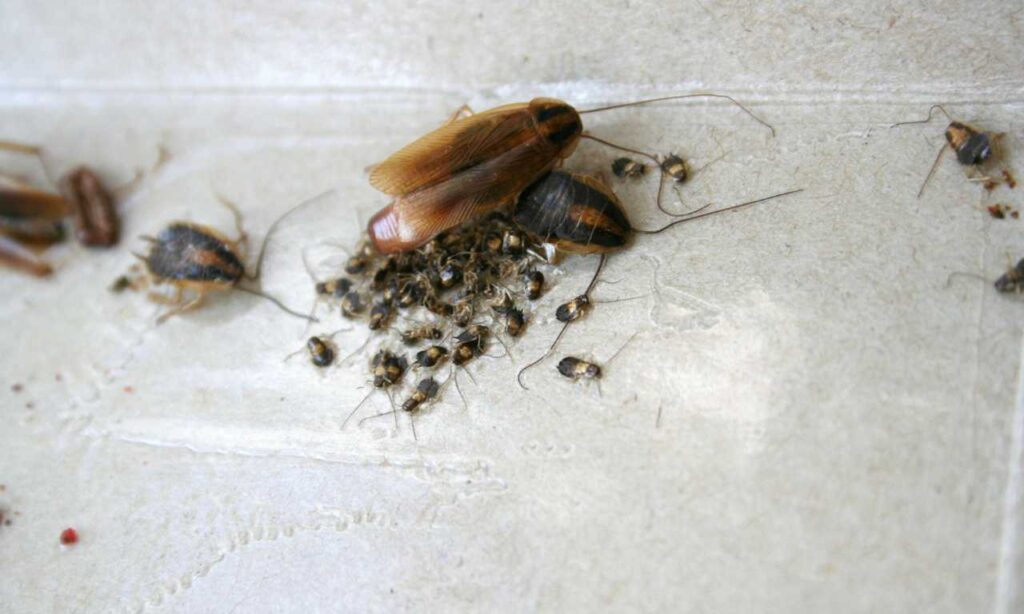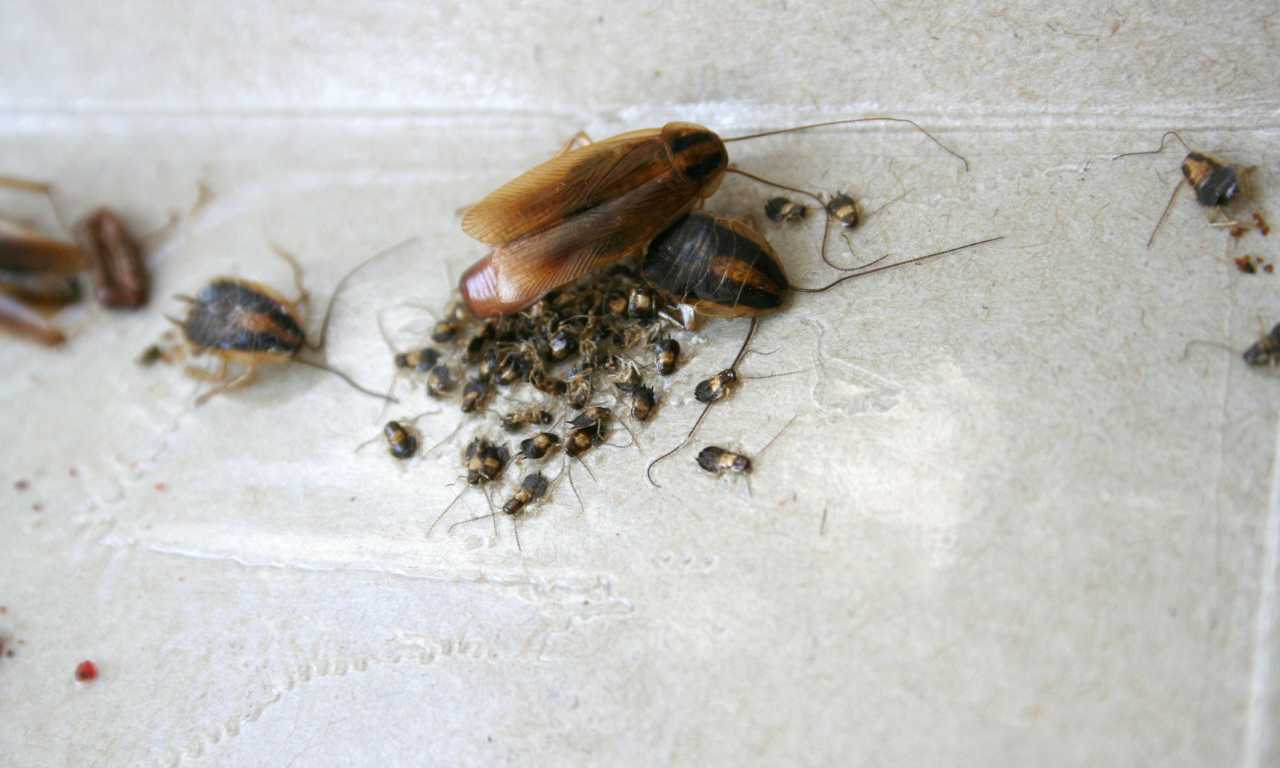

Lots of insects have white blood and cockroach is one of them but there is a specific reason to why their blood looks white. Here is the reason why
Cockroaches, like all insects, have a type of hemolymph (insect “blood”) that is generally clear or white in color. This is because the hemolymph does not contain red blood cells, which give mammal blood its red color. Instead, the hemolymph functions primarily as a hydraulic system, transporting nutrients and other substances throughout the body.
Cockroaches also have a tubular, open circulatory system, which is different from the closed circulatory system of mammals. In a closed circulatory system, the blood is confined to vessels such as veins and arteries, while in an open system, the blood flows freely through the body cavity and bathes the organs directly. This means that cockroaches do not have separate organs to pump and circulate the blood.
Another important aspect of cockroach hemolymph is that it contains a chemical called prothoracicotropic hormone (PTTH). PTTH is responsible for the molting process in cockroaches, which is necessary for them to grow and develop.
Cockroaches also have specialized cells called hemocytes that function as part of their immune system. These cells help to defend the insect against bacterial and fungal infections. Hemocytes are also able to engulf and digest foreign particles, such as bacteria or debris, that may have entered the hemolymph.
In summary, cockroaches have white blood because they have a type of hemolymph that does not contain red blood cells, but it functions primarily as a hydraulic system, transporting nutrients and other substances throughout the body. Also, they have open circulatory system and their blood contains a chemical called prothoracicotropic hormone (PTTH) that is responsible for the molting process and specialized cells called hemocytes to defend the insect against bacterial and fungal infections.
Is Cockroach Blood Dangerous?
Cockroach blood, also known as hemolymph, is not considered dangerous to humans or animals when it comes to direct contact. It is not poisonous or toxic, and it is not known to transmit any diseases.
However, cockroaches are known to carry a variety of pathogens and other harmful organisms on their bodies and in their gut, which can lead to contamination of food and other surfaces if they come into contact with them.
Cockroaches are known to feed on a wide range of materials, including feces, garbage, and rotting organic matter, which can cause them to pick up a variety of harmful bacteria, viruses, and parasites. These organisms can then be transmitted to humans or animals if the cockroaches come into contact with food or other surfaces that we come into contact with.
Another potential concern is that cockroaches can trigger allergies and asthma in some people. Cockroach allergens are proteins that are found in cockroach saliva, feces, and body parts, and they can become airborne and inhaled. This can cause symptoms such as runny nose, itchy eyes, and difficulty breathing in people who are sensitive to these allergens.
Additionally, cockroaches can also cause structural damage to buildings. They may chew on various materials such as books, paper, and clothes, and they can also damage electrical wiring, which can cause fires.
In summary, cockroach blood, also known as hemolymph, is not considered dangerous to humans or animals when it comes to direct contact. However, cockroaches are known to carry a variety of pathogens and other harmful organisms on their bodies and in their gut, which can lead to contamination of food and other surfaces if they come into contact with them. They can trigger allergies and asthma in some people and can cause structural damage to buildings.
Do Cockroaches Bleed Too Much?
It is not accurate to say that cockroaches “bleed too much” as they do not have red blood cells like mammals and do not bleed in the traditional sense. However, when a cockroach is injured, it can lose hemolymph, the clear or white fluid that functions as its circulatory system, which can result in significant loss of fluid from the body.
The amount of hemolymph loss that occurs in a cockroach depends on the severity of the injury. A small puncture wound or crack in the exoskeleton may result in only a small amount of fluid loss, while a larger injury such as a broken limb or a cut through the body can result in significant loss of hemolymph.
Cockroaches have an open circulatory system, which means that the hemolymph flows freely through the body cavities and bathes the organs directly. This means that when a cockroach is injured, the hemolymph can leak out quickly and in large amounts, depending on the severity of the injury.
However, it’s important to note that cockroaches have a relatively low blood pressure and also have a specialized layer of cells in their exoskeleton called the peritrophic membrane which helps to reduce loss of hemolymph and other bodily fluids when they get injured.
In addition, cockroaches have a unique ability to repair their exoskeleton and heal their injuries, which can help to reduce the amount of hemolymph loss over time. They have the ability to produce a protein called prophenoloxidase (PPO), which helps in the formation of a clot that seals the injury and prevent further loss of hemolymph.
In summary, it is not accurate to say that cockroaches “bleed too much” as they do not have red blood cells like mammals and do not bleed in the traditional sense. But when a cockroach is injured, it can lose hemolymph, the clear or white fluid that functions as its circulatory system, which can result in significant loss of fluid from the body depending on the severity of the injury.
However, cockroaches have a relatively low blood pressure, specialized layer of cells in their exoskeleton called the peritrophic membrane and the ability to produce a protein called prophenoloxidase (PPO) that helps in the formation of a clot that seals the injury and prevent further loss of hemolymph.
Is Cockroach Blood Sticky?
Cockroach blood, also known as hemolymph, is not sticky like some other fluids might be. It is a clear or white fluid that flows freely through the body cavities of the cockroach and bathes the organs directly. The consistency of cockroach hemolymph is similar to water and it does not have the same viscosity or thickness as mammalian blood.
Cockroaches have an open circulatory system, which means that the hemolymph flows freely through the body cavities and bathes the organs directly. This is different from the closed circulatory system of mammals, in which the blood is confined to vessels such as veins and arteries.
When a cockroach is injured and loses hemolymph, the fluid may leak out of the body in a steady stream, rather than in a sticky or viscous manner. Additionally, the hemolymph is not under pressure as it is in a closed circulatory system, which can also contribute to the lack of stickiness.
Another reason why cockroach hemolymph is not sticky is because it does not contain red blood cells that can cause clotting. In mammals, red blood cells contain hemoglobin, which is responsible for the red color of blood and also helps to form clots when an injury occurs. However, cockroaches do not have red blood cells and therefore do not have the same clotting mechanisms as mammals.
Additionally, cockroaches have a specialized layer of cells in their exoskeleton called the peritrophic membrane which helps to reduce loss of hemolymph and other bodily fluids when they get injured. This layer is made up of chitin and other molecules that form a barrier around the cockroach’s body, preventing the hemolymph from leaking out too quickly.
In summary, cockroach blood or hemolymph is not sticky like some other fluids might be. It is a clear or white fluid that flows freely through the body cavities of the cockroach and bathes the organs directly. The consistency of cockroach hemolymph is similar to water and it does not have the same viscosity or thickness as mammalian blood.
Cockroaches have an open circulatory system, which means that the hemolymph flows freely through the body cavities and bathes the organs directly, it does not contain red blood cells and therefore do not have the same clotting mechanisms as mammals, and also have a specialized layer of cells in their exoskeleton called the peritrophic membrane which helps to reduce loss of hemolymph and other bodily fluids when they get injured.
Welcome to my blog. I have been doing pest control for years since my house, garden and pets were always attacked by various kinds of pests and as a result I had to know proper pest control techniques that works. In this blog I share all the tips and tricks that I know and I hope you’ll find it helpful.
